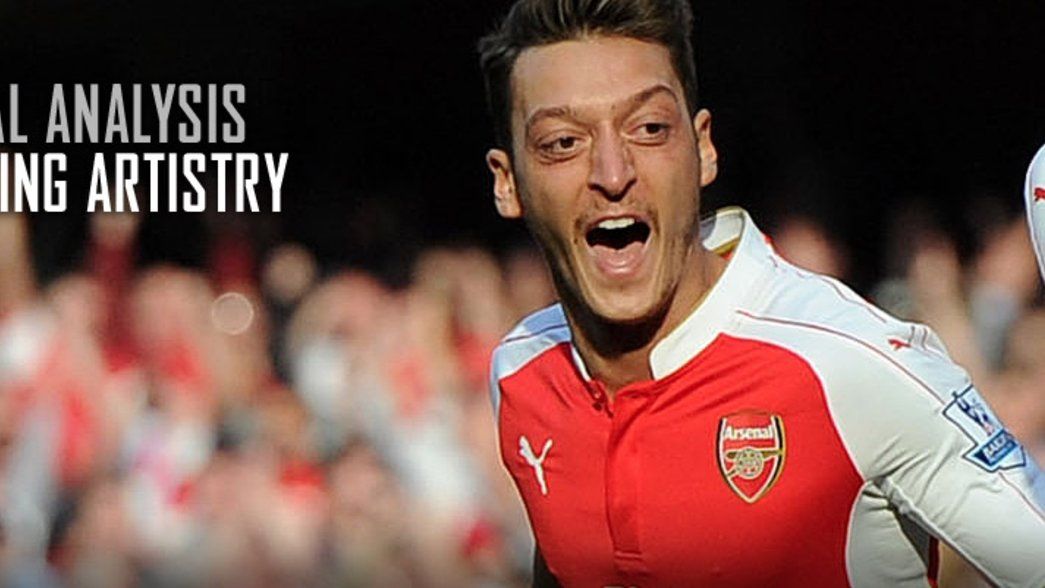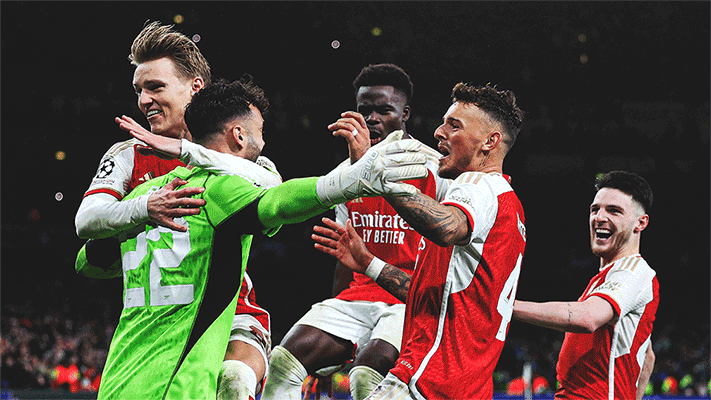Arsenal's 3-0 defeat of Manchester United was an irresistible display of modern attacking football.
Pace, technique and brilliant combination play ripped through the opposition defence. Alexis scored two goals, Theo Walcott claimed two assists and Mesut Ozil grabbed one of each.
But it was also a throwback. It felt like one of those matches of the Invincibles era, when the Gunners destroyed the opposition in the opening half-hour, and then spent the remainder of the game preserving the lead.
Arsenal often score goals in flurries, following an opener with a second in quick succession, but they rarely put the game to bed so quickly.
In fact, over the past couple of years, Arsene Wenger’s side have often started matches too slowly, especially at the Emirates. The goal deluges have usually been in the second half - in stark contrast, if you missed the opening 20 minutes on Sunday you missed the scoring entirely.
This was exactly the type of game Arsenal like. It wasn’t a slow, patient tactical battle, it wasn’t against a side determined to defend deep, park the bus and get the draw. Manchester United, who had started the weekend as the Premier League leaders, arrived at the Emirates determined to dominate possession. Therefore, Louis van Gaal used his two best passers, Michael Carrick and Bastian Schweinsteiger, deep in midfield.
But dominating possession isn’t simply about conserving the ball, it’s also about winning it back quickly. Therefore, the Dutchman ordered his midfielders to push up and press Arsenal’s central midfielders, with Schweinsteiger in a particularly advanced role, trying to get into the face of Francis Coquelin and Santi Cazorla.
But the pass-and-move style Arsene Wenger adores means Arsenal can play through the opposition lines swiftly, and Cazorla’s midfield trickery is perfect for slaloming away from challenges.
With space opening up between United’s defence and midfield, Ozil thrived between the lines, Alexis had license to move inside, while Walcott played on the shoulder of the last defender and tempted United’s centre backs in the opposite direction. Those three were brilliant, all creating two chances apiece.

Chances created against Man United
The opening 20 minutes was a truly scintillating display of football, and while Alexis' two finishes were superb, it was Ozil’s goal that showed Arsenal at their best: playing slick, neat passing football and getting the ball into the opposition box quickly.
Another interesting part of the gameplan was the shape without the ball. Just as United were scared of Walcott’s speed, Arsenal knew they had to defend a little deeper than usual against Anthony Martial, and it was unusual to see them often camped on the edge of their own penalty area, allowing the opposition to dominate possession at the Emirates. When 3-0 up, of course, the approach is bound to change.
The desire to remain compact, though, meant that in addition to Arsenal’s two banks of four dropping back close to their own goal, Ozil and Walcott also took up very deep positions. Carrick and Schweinsteiger saw plenty of the ball in the second half, but they were rarely able to play killer passers because the hosts' attackers played such a good defensive role.

Theo Walcott
The next step, ideally, would be for that duo to spring forward dangerously on the counter-attack - something which wasn’t particularly obvious in the second half. In addition to providing a goal threat, a counter-attacking it also means the opposition feel obliged to keep men back, making a comeback even less likely.
But Arsenal’s attacking in the first 20 minutes was enough, and the value of such an early goal can’t be underestimated. For more convincing victories like this, the Gunners need to hit the ground running.
Copyright 2024 The Arsenal Football Club Limited. Permission to use quotations from this article is granted subject to appropriate credit being given to www.arsenal.com as the source.










